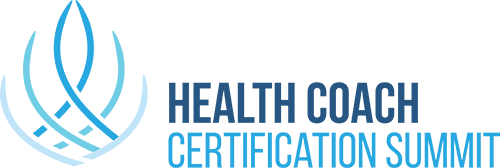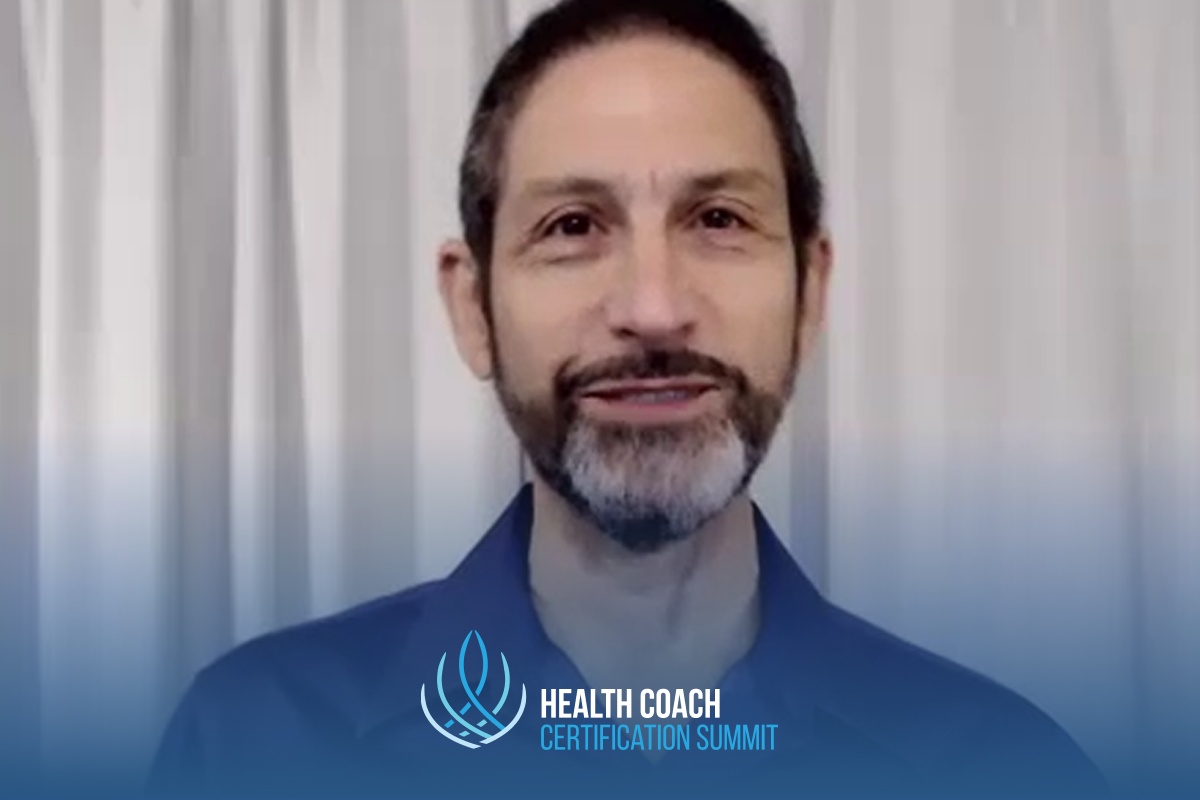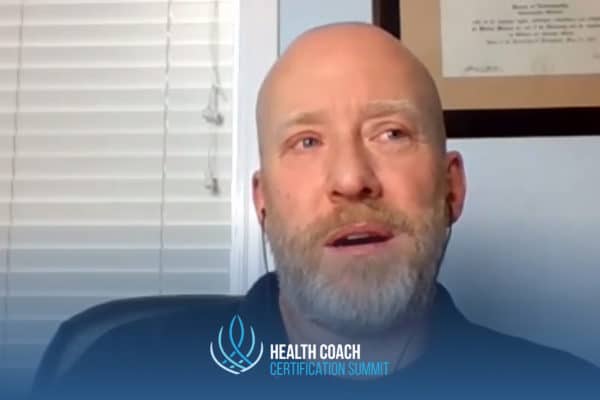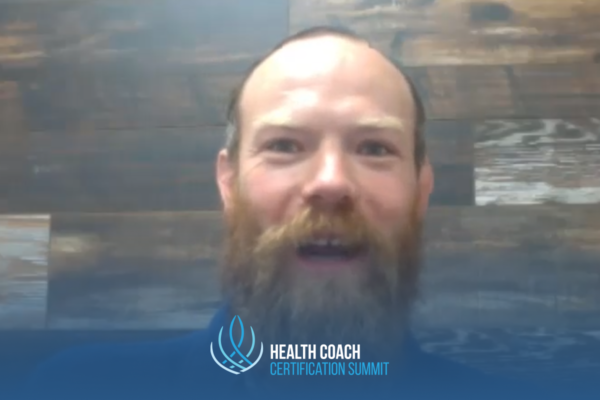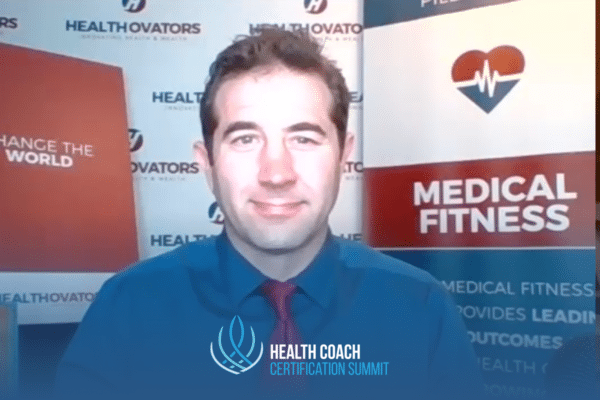Join the discussion below
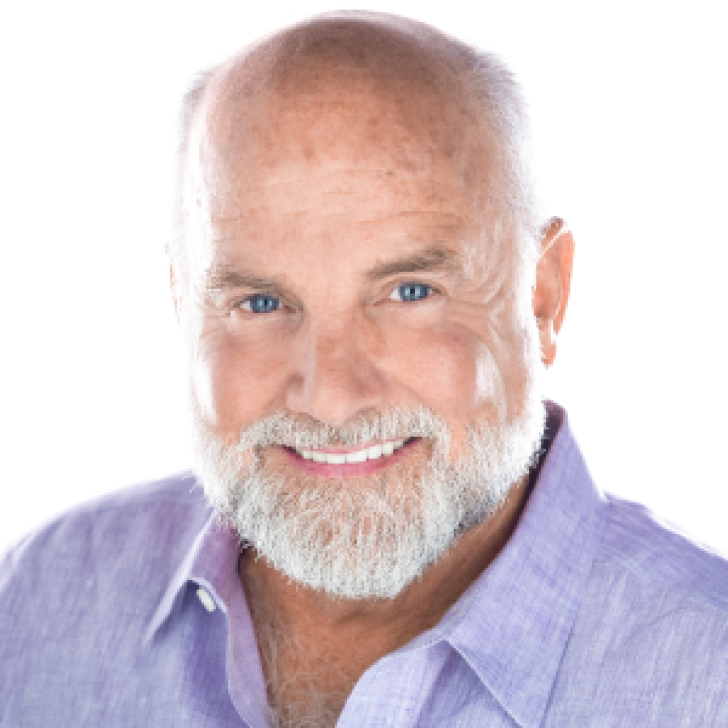
Reed Davis, Triple-Board Certified Holistic Health Practitioner (HHP) and Certified Nutritional Therapist (CNT), is an expert in functional lab testing and holistic lifestyle medicine. He is the Founder of Functional Diagnostic Nutrition® (FDN) and the FDN Certification Course with over 3000 graduates in 50 countries. Reed served as the Health... Read More
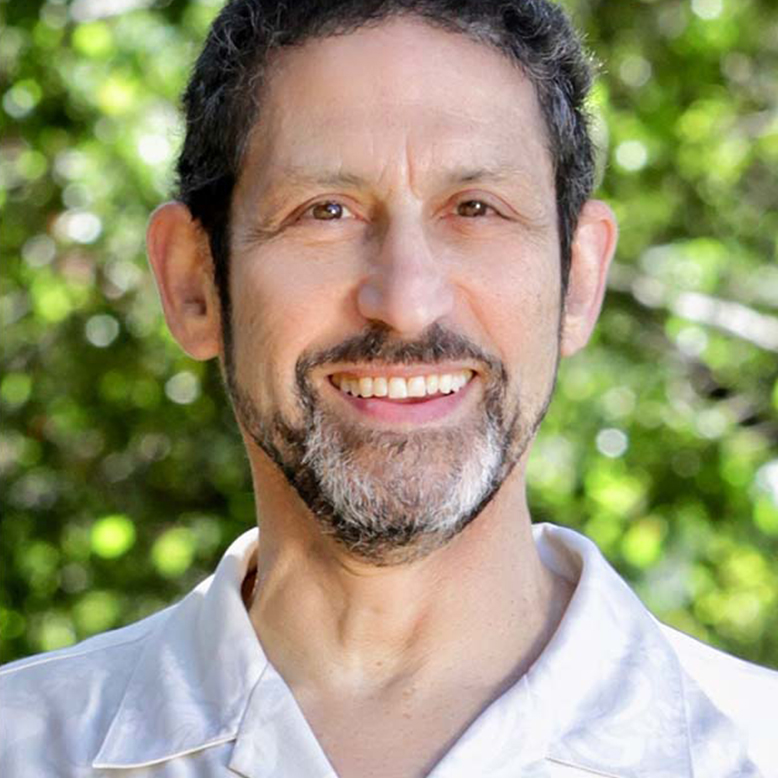
Lion Goodman, PCC is a professional certified transformational coach, author, and subconscious pattern detective. He is the founder of the Clear Beliefs Institute, which offers programs to free people from limitations, negative thought patterns, blocks, and resistance caused by beliefs in the core of the psyche. The goal of every... Read More
How many of your clients have limiting or negative beliefs underneath their health challenges? Learn how to clear them out of the way in the Clear Beliefs Coach Training. In 20 weeks, you will learn how the subconscious, conscious, and superconscious minds work together to create a “reality” from beliefs, and how to change them at that infrastructure level. You will understand how beliefs function, where they come from, and how to change them. You will master a dozen different tools for deep and profound transformation that is both rapid and permanent. Join the community of more than 400 coaches from 35 countries around the world who are bringing true healing from childhood wounds, traumas, and negative programming. Empower your clients to create new beliefs, and change their lives from within. Accredited by the International Coaching Federation for 48 hours of CCEUs.
Reed Davis, HHP, FDN-P, CMTA, CNT
Everybody, I’m so glad you came back. You’re gonna really like the next guest. Lion Goodman Goodman. He’s a professional certified transformational coach. He’s an author and subconscious pattern detective. Now, you know how we love that word detective, finding out what’s really going on. So he’s the founder of the Clear Beliefs Institute, which offers programs to free people from their limitations, negative thought patterns, any kind of block or resistance caused by their beliefs in the core of the psyche. This is a perfect, perfect guest for this program here. We’ve had a lot of people talk about anatomy, physiology, biochemistry, and sort of the business aspects and marketing. Only a couple that are really into the mindset, the belief system. So this is critical, critical work for health coaches. Now the goal of every program of Lion Goodman’s is to bring about each person’s healing, awakening, and freedom to create the life they desire. Now you know why he’s here, because that’s what we’re all looking for. How do we create that life? Now, he’s the creator of the Clear Beliefs Method.
That’s a process for healing core wounds and clearing beliefs rapidly and permanently. Permanently. He’s trained hundreds of coaches and therapists and healers around the world through the Clear Beliefs coach training, which is offered only twice each year. Graduates of the program call it the missing piece in my training. I’ve heard this before and I’ve talked to Lion Goodman quite a bit, and I believe this is a missing piece. It’s a magic wand that you can use to help your clients with any problem or issue. If you don’t get to beliefs, you could be leaving an awful lot that’s blocking them from reaching the results that you otherwise might be very good at getting them to achieve. So Lion Goodman has more than 40 years of study and practice in psychology, neurology, spirituality, philosophy, linguistics, and the principles of success. He’s taught workshops and trainings across United States, Canada, Europe, and China. He is the author of five books, including Creating On Purpose—love that—and How To Clear Your Clients’ Limiting Beliefs. Love that too. He’s published more than a hundred articles on consciousness, beliefs, psychology, and inner development, which can be viewed at www.Lion Goodmangoodman.com. Now we’ll put all the other information out in the show notes, of course, but Lion Goodman I want to welcome you. It’s been nice getting to know you and thanks very much. Say hi to the folks.
Lion Goodman
Thank you, Read. It’s really great to be here. I appreciate being invited and I’m looking forward to this combination of physical health and mental health and making it work for everybody.
Reed Davis, HHP, FDN-P, CMTA, CNT
Yeah, well, you’re the main man. I want you to give us a little bit more about your background. Like I want to ask you about your program and some other things, but tell us how the heck you ended up doing this.
Lion Goodman
Well from very a very early age I knew that there was something wrong with me. That’s where it all started. [Laughing] So I dedicated myself to fixing myself, whatever was wrong. So I looked in all different areas of life and tried to fix myself and over many years trying—I took over a hundred workshops. I did psychotherapy, I did physical therapy, all kinds of things. What I realized when I looked back at the history of my inner work was that whenever I changed a belief or really core inner belief, everything changed from that point forward. So my favorite example is when I was in therapy as a young man, and I suddenly realized, “Oh my God, it’s not my mother’s fault.” That was a big change in a belief.
It turned me from a victim of my mother to actually having an adult consciousness. So I began looking at beliefs themselves, where did they come from? How do we get them? How do they function? What are they doing there? And then really, how do we change them? So I took a lot of different workshops. I thought other people had the answer. What I found was that most belief change methods produce only temporary or partial results that you might feel better for a little while, but then the old belief comes back. I was looking for something permanent and complete so that when it’s gone, it’s gone and it doesn’t come back. So I had to invent it.
Reed Davis, HHP, FDN-P, CMTA, CNT
Yeah. Remarkable. So you went to all these workshops and then did you—were you teaching or were you working one-on-one with clients or was it mostly from an academic perspective? What were you doing for a living, I guess I’m asking?
Lion Goodman
What I was doing for a living is I was a head hunter.
Reed Davis, HHP, FDN-P, CMTA, CNT
Oh, wow.
Lion Goodman
So I was helping companies find the right kinds of people. I started as a professional recruiter and that’s how I made a living while I was doing all this exploration. Then when the .com bust happened, my business went down the tubes along with all my clients. So I wasn’t sure what to do and my girlfriend at the time said, “You should be a coach.” And I went, “What’s that? I don’t know anything about coaching.” She said, “Sure you do. You’ve been coaching executives and candidates for 30 years.” And I went, “Oh, I guess I do know some things about coaching”. So I took everything that I had learned in my own self development and began teaching it to others and working as a coach individually, and then eventually teaching my methodologies.
Reed Davis, HHP, FDN-P, CMTA, CNT
I can tell you have a lot of coach in you, just the way you speak. I took a course back in the nineties, it was called Personal Coaching but I’m not sure—it was mostly, I think NLP. I’ll bring that up with you later, but tell me ’cause you’ve taken all these different courses and you said some of them were better than others. What do beliefs have to do with health and healing? Why should health coaches care about that?
Lion Goodman
For me, beliefs are fundamental to everything in our lives. When you look at how a person perceives the world, they’re perceiving through a lens which I call beliefs. Now there’s lots of different names for this thing I call beliefs: paradigms, lenses of perception. There’s lots of words that describe this fundamental essence of the mind. To me, it’s the infrastructure of the mind. It’s how the mind is created from the time we’re born—actually before we’re born—but from the time we’re born, we’re trying to put together patterns. We’re looking at patterns, trying to understand patterns and then remembering patterns so we can use them for survival. So that’s really the fundamental essence of beliefs. So they are the way we see the world. They’re the way we see ourselves, and they’re the way we see other people. They’re like colored lenses. If you’re looking through a yellow lens, the world looks different than if you’re looking through a green lens, right? So if you’re looking through the belief, “life is hard”. As you look around, you’re gonna see all the hard parts of life. If you’re looking through the belief “life is joy”, you’re going to be seeing joy everywhere. So beliefs are always self verifying. We always see evidence for the beliefs we have, which is called cognitive bias in psychology.
Reed Davis, HHP, FDN-P, CMTA, CNT
So when it comes to the pursuit of health and healing and things, how does beliefs—I mean, some people believe that if you take your medication, you’ll get better. Which we know you don’t, you’re just treating the symptoms only. How can we apply that to like actually improving your health?
Lion Goodman
Well, everyone’s familiar with the placebo effect, right? That research has shown that whether you believe in the drug you’re taking has at least 30% to do with whether you get better or not. Now, unfortunately the FDA and the research companies have never done research on beliefs. Even though they are 30% of the effectiveness of any drug. So the placebo effect is actually the belief structure. I believe I’m going to get better and I get better. Or I believe I’m not going to get better and I don’t. There’s also diagnosis shock. When someone sees the doctor and the doctor says, “Well, you’ve got cancer and you’ve got six months to live.” That shocks the system and that belief begins the body’s process of dying. It’s like, “Oh, I’m going to die. I guess I need to get busy.”
Reed Davis, HHP, FDN-P, CMTA, CNT
Yeah, we call it the nocebo effect. There’s a placebo and a nocebo. This is why sometimes, Lion Goodman, genetic testing can even be a downward spiral and initiate some kind of negative belief Like, “Oh my God, I’ve got the gene for colon cancer.” And there could be no colon cancer, the gene hasn’t expressed itself in that way. But the beliefs can maybe affect—we are looking at ways, are they actually affecting genetic expression? So again, if you get told you have the genes for some, some oddball thing, next thing you know you get it. It’s called the nocebo effect. Hate that though.
Lion Goodman
Yeah, there’s also the deeper beliefs about the self. So all physicians and nutritionists have an issue with compliance, right? Will the person actually follow the guidelines you give them? It’s true for all health practitioners, like you still need to get the person to do what they’re supposed to do. And if a person believes I’m not worthy, for example, deep in the subconscious mind, then they’re not worthy of health. They’re not worthy of— “Why should I bother doing that thing when I’m not worthy?” So in many cases, the issue of compliance or getting better has to do with a person’s self image and self beliefs, as much as belief in the medicine or the treatment.
Reed Davis, HHP, FDN-P, CMTA, CNT
Yeah. It makes a lot of sense. We’ve had a couple of guests that talked about mind, body connection. This is I think, a little different than that. Which one do you think is more important? The mind, the body—the mind body connection, or what you’re talking about? Or how are they different?
Lion Goodman
Well, for me, everything’s connected to everything. So if we start there, then, mind and body are interwoven. Intervening is what [inaudible] called it. Everything exists at one time. We’ve got 70 trilLion Goodman cells in our body and they’re all cooperating and functioning without our management and control. So it’s clearly—things are working behind our conscious minds. That’s why people say the subconscious is 95 or 98 or 99.9% of the mind. What I’ve found is that we can actually go down into the subconscious mind and sort of dig up the roots of the weeds. So if there’s a weed, you can chop it off at the top, but it’s gonna grow back. You can stomp on it and it’ll grow back. But if you pull it up by the roots, it doesn’t come back. So that’s what I discovered about beliefs is that you can try to pound on the belief with affirmation. “I am a good person. I am good person. I am a good person.” But what it does is it stimulates the old belief— “I’m a bad person”—to just come up and push harder. Or you can chop it off and say, “Well, I know I’m a good person. I’m not a bad person consciously I’m very clear about that.” But that doesn’t affect the subconscious belief, that’s still there underground.
Reed Davis, HHP, FDN-P, CMTA, CNT
Yeah.
Lion Goodman
So in my methodology you learn how to go down below the level of the conscious mind into the subconscious, the deep subconscious, and route out the beliefs that are interfering with a person’s health or happiness or success.
Reed Davis, HHP, FDN-P, CMTA, CNT
Yeah. I almost wish people would get more of this kind of education at a younger age, you know? ‘Cause it took me half of my life to realize that I wasn’t stupid like my father used to call us. Anything we did wrong, “You’re stupid”, but we weren’t stupid. We just were ignorant. There’s a difference. Or we weren’t experienced. But he was a tough guy and it took me a long time to kind of deal with that. I have a 38 year old son now who I’ve never called stupid, not once, because I know that it can have a negative effect. He’s brilliantly successful, much more successful than I was at his age. It’s amazing how that stuff works.
Lion Goodman
That’s one of the main sources of beliefs. It’s indoctrination, right? We get indoctrinated by our parents, but they’re doing what they think is right. They’re not being mean to us. They think that if they beat us up or if they insult us that they’re going to toughen us up for the world. So they’re giving what they think is best. As children, we want to believe what they believe, because if we do, we will be more like them. If we’re more like them, they will like us more and they won’t throw us out to the wolves. So it’s kind of a cooperative deal where they’re doing whatever they do and we’re saying, “Oh yeah, I’ll agree with that. I’ll take on your beliefs about myself. And that way I’ll be closer to you. I’ll maintain the survival relationship we have. You won’t flush me down the toilet.” So it’s very deep programming that’s actually taken on by the child. Even though it’s being indoctrinated from the outside, the child is going, “Yes. Please give me the truth.”
Reed Davis, HHP, FDN-P, CMTA, CNT
Yeah. Yeah. Well I want to hear more about techniques or something like that. I just gave you one example. I’ll tell you another one is when I was like, I think eight or nine, my parents gave me some money to go sign up for swimming lessons. It was like the last day of school, we were out for summer break and you gotta pay for your swimming lessons at school. I lost the five bucks, I think it was, for a week’s worth of swimming lessons. It was a long time ago. So, I got punished for it and I got told for forever that I was bad with money. Like, “We don’t give it to Reed, he’ll lose it. He can’t handle money. Reed’s not good with money.” I was eight years old! I just lost the damn $5 bill, that’s all. But it affected me that I thought I was bad with money. I stayed broke for a long time because of that. Believe it or not though, I finally found the five bucks, like two months later. It was in a school book and I went downstairs and I gave it to my parents and they didn’t say a word. They didn’t say sorry or anything. I was just still bad with money. It lasted. I know for a fact I’ve done some deep work and that came up. Give us some more examples like that. Like some of your clients, how they’ve gotten over things.
Lion Goodman
Well, let’s talk about obesity, which is a pandemic in our culture, right along with COVID-19. I’ve worked with a lot of people who are extremely overweight and there’s always a deep belief underneath that weight gain. Now it may be hormones, but the beliefs may be affecting the hormones, right? So you can look at it many different ways. What I’ve found is that women who—especially women who are massively overweight—they’re protecting themselves from something. So they’re padding their body and it’s usually sexual abuse or sexual mistreatment that they experienced as a girl or as a young woman. A woman’s breasts start growing, men start looking at them, making cat calls and treating them like objects. And because that’s such negative attention, they say, “Well, at least if I get fat, I won’t get that kind of attention.” So I’ve worked with people and routed out those really deep beliefs. Those traumatic experiences. Then the weight just starts falling off because they don’t have that need to protect themselves anymore.
Reed Davis, HHP, FDN-P, CMTA, CNT
Yeah. That’s a good example. I’ve heard—remember I said, I did a personal coaching course back in the ’90s and it was mostly neuro linguistic programming. NLP. Since then I’ve taken some other things to help in this area, like the tapping thing, EFT. Then I’ve heard of EMDR, there’s other modalities like that. How does what your method— how are your methods different?
Lion Goodman
Well, let’s use tapping for example. To me, again, as I said, everything is connected. So our energetic system is connected to our mind, it’s connected to our body. Tapping is a way of dispersing the energy that’s fixed in the body when it comes to a particular belief or particular character, and it is a good temporary relief, but the reason you have to keep tapping and keep tapping and keep tapping and keep tapping is because you’re releasing the energy, but it gets reformed by the deeper belief in the subconscious mind. So it’s a temporary fix. It’s a great temporary fix. And in some cases, if you do it enough, we actually change it at the fundamental level, but most people never reach that because they give up and they go, “Well, it’s not working.” So they tend to stop using it instead of going all the way to the point where it disappears completely.
NLP was originally created as a way of looking at someone, figuring out what they’re doing—like a successful person, what do they do? And then say, “Well, if we use that and we have other people do those things they will be successful.” So it’s kind of an outside in approach to mind change. This is what healthy people believe, therefore let’s change the beliefs to get them to believe that. Therefore it will change. Outside in approaches—there’s a lot of outside in approaches—psychotherapy is essentially an outside in approach. We’re gonna—you tell your story and I’ll listen and eventually something will come out of you, but it’s mostly like here’s how to solve the problem. Most coaching is problem solving from the outside in.
So the work I do is from the inside out, we’re going down into the core of the subconscious mind, finding out what that causal belief is and clearing that, and then replacing it with a very positive and empowering beliefs. Now, the reason we do that is like—I use the analogy of a garden. If you’re going to build a garden from scratch, first you have to remove the rocks and the weeds and amend the soil. Then you plant your seeds for what you want to grow. You don’t throw your good seeds on rocky, weedy ground. So we do the same thing. We clear out the old beliefs first and then when you plant the new beliefs, then it’s planted and it grows. It doesn’t require repeating over and over and over again. Affirmations, as I mentioned before, is like stomping on the weed hoping that it disappears. When in fact, if you just pulled the weed up, got all the weeds out, then you could plant your flowers or your vegetables, and actually have a beautiful garden. So that’s the principle underlying what I do and why it’s different and why it works better than these other methodologies and all methodologies work for some people. So I’m not demeaning any of them, it’s just that most of them produce temporary or partial results.
Reed Davis, HHP, FDN-P, CMTA, CNT
So if it comes to healing—again, we’re talking to health coaches here who are gonna be dealing with clients with a wide variety of problems, things about themselves that they want to change—what are some of those really deep beliefs that they have that are blocking them?
Lion Goodman
Probably the most insidious one is the worthiness belief. “I’m not worthy. I’m not worthy of success. I’m not worthy of love. I’m not worthy of health.” If that’s underneath the person’s subconscious mind, it doesn’t matter what you throw at them or what you guide them toward, the underlying belief will prevent them from doing the work or taking the medications or changing their diet. So that’s one of the most insidious ones. The most common belief I know of is, “There’s something wrong with me.” Now, in a lot of ways, there are lots of things wrong with us, right? [Laughing] There’s—nobody’s perfect as far as I’ve met so far. So that can be a very good belief, if there actually is something wrong, but if there isn’t something fundamentally wrong, the belief can actually create something wrong because all beliefs get verified.
So if somebody feels, “There’s something wrong with me internally, I’m a broken person, or I’m a sinner, or I’m flawed so much that I’ll never recover.” That kind of belief will prevent someone from actually getting better. “Why should I get better if there’s something wrong with me?” Or, “There’ll be another thing wrong with me as soon as that part is fixed.” So I’m sure your health coaches know that you can chase one particular issue and that one goes away, but then another one crops up. That’s because there’s some belief that says, “There’s gotta be something wrong with me. If it’s not this, or I fix this, good, this is the problem that now shows up.” So for me, going into the belief structure and clearing the beliefs along with health coaching is a perfect combination because you’re working both at the physiological level and also at the psychological level. They’re so intimately connected, you can’t really divide them up.
Reed Davis, HHP, FDN-P, CMTA, CNT
Now how would this work with someone who just can’t make commitments? ‘Cause one of the things about health coaching is you start assessing, you start forming an impression of a person almost as soon as you meet them, how do they look? You know, how they’re dressed, they’re overweight, underweight, they have saggy eyes, bad looking skin, you know, whatever. You’re assessing. Health coaches, we can’t help ourselves, we’re assessing. Is this someone who I might be able to help or something? We talk to them, we find out, yeah, they’ve got all these things that they want to change that’s been going on for a long time, maybe years. Yet they are not better. That’s actually what motivated me to start doing the research.
I started 20 years ago, figuring out what’s really wrong with people on a physiological and biochemical and anatomical level. Yet, some of them just—they won’t—you can take them to the water and you can’t make them drink. Is this useful for that too? Like, there’s something—in other words, I run labs. I explain, here’s what’s wrong with you, so to speak. We call them healing opportunities. Moving forward, if we can get this balanced and that working better and this… And it’s all stuff that they get to do, they get to do the right diet and exercise and stress reduction and supplementation, sleep patterns and things like that. So we can—I can do that in a very short period of time for someone. Getting them to do it, that’s a whole different story. Even though they know what to do, how does it apply to something like that? Like let’s say someone takes your training, can they get that person to follow the program?
Lion Goodman
That’s a great question. So again, we’re back to compliance, getting the patient to actually do what you say. There’s a lot of reasons for why a person doesn’t. The number one reason people aren’t successful is quitting. The number one reason why people quit are their limiting beliefs. So again, it comes down to beliefs. So if a person believes, “I’ll never get better”, then why bother doing all these things? If someone believes, “I don’t deserve to be healthy, I don’t deserve happiness. I don’t deserve success.” Why bother doing the things that the health coach recommends? If I believe, “This won’t work, I’ve tried lots of things and nothing works”. That’s going to interfere with whatever they do, whether they actually do it, or whether it works or not.
So for me, these are the fundamental questions to ask for a health coach is when you make a recommendation and a week later, you check in with them and say, “How’s it going?” And they say, “Well, you know, I did this for a couple of days, but then I didn’t.” Then the health coach could turn to them and say, “Well, let’s look at your beliefs to see why you didn’t follow through on your commitment.” Because there’s always something there. That’s the detective part. That’s the fun part of diagnosing the belief that’s underlying the behavior. If you can clear that, then they come back with their full commitment, because that’s not in the way anymore. Now, two weeks later, they might quit again. And so again, you apply the same technology and you say, “What was it this time that caused you to stop?” With my techniques, you can find that core belief fairly quickly and then clear it. Now the person’s back on track. Now it turns out that this is life, right? We make progress and an old belief pops up, and if we clear it, then we can move forward again. Or if the old belief pops up, but we don’t clear it, we turn away and go backwards, right?
We just stop. We quit. So that is the process of life. Moving forward. Something comes up, clear it. Now you can move forward again. In fact, the analogy I like to use is a machete. If you’re in the jungle and you have a direction you want to go, there’s lots of stuff in the way that was there before you got there. But if you have a machete, you can clear whatever’s right in front of you and then move forward some more. Then something else, you run into something else. You clear that with a machete, and now you can move forward again. So to me, this is the process of healing. It’s kind of a never ending process because we have tens of thousands of beliefs, many of them positive, many of them neutral. Some of them are negative that affect us and impact our lives.
Reed Davis, HHP, FDN-P, CMTA, CNT
Yeah. So I need a machete. [Laughing] I have a funny story about that, but nevermind. So when a person graduates from your training, that’s what they’ll be able to do. They’ll be able to get out the machete and kind of carve away some of these underlying beliefs and be able to clear those out. Is that what they do for a living? In other words, is this a separate session they have with the person, so they’re adding this to their session work with a client. I’m looking at the actual sort of production side of things, or do they just kind of slip it in there while they’re doing their regular health coaching? I’m not sure if you know what I mean.
Lion Goodman
I do. I do. In fact, one of the parts of the training is how to integrate these tools, this tool set, into your current practice, because people come from all different kinds of practices into my training. So if a person’s health coaching, you can just slip these techniques in when you ask the person, “What happened?” And they say, “Well, I didn’t take my medication, or I changed my diet, or I ate the cake, even though I knew I shouldn’t.” So if you then apply that particular tool at that moment to that particular thing, you can find its root and pull it out by the root. Then the person can remake their commitment in a much stronger way. So it’s really a tool set that I offer. It’s not a particular process that you have to do. My job is to give you tools like a carpenter’s tool set, right now I need a screwdriver, so I’ll use this tool. Right now I need a saw so I’ll use this tool. So that’s what I offer people. They integrate it into their practice in whatever way works. Some people become Clear Belief practitioners because they love the work and it’s truly transformational.
Reed Davis, HHP, FDN-P, CMTA, CNT
I bet. I could see both ways. So let’s say I have a prospective client and I do—Ihave an onboarding process that really works. I turned around to where I’m interviewing them to see if they qualify for my practice and if I can help them. Number one, do I think I can help this person? Number two, do they qualify? Do they meet my standards of ready to get started, ready to pay me, fully committed, and these kinds of things. So I have a great onboarding process, but what frustrates me sometimes is you’re talking to a person who might’ve even sought you out and you ask them, what’s their main complaint, and let’s see it’s explosive diarrhea or migraines or something like that. “Explosive diarrhea, I’m sorry to hear that, how often does that occur?” And they go, “Oh, like 3, 5 times a week.” And I’m like, “Geez, I’m sorry to hear that. That’s not normal. That’s not good. How long has it been going on?” “Oh, like three years.” I’m like, “Geez, this sounds horrible. What have you tried so far that obviously hasn’t worked?” And they’ve tried medication, they’ve tried different diets.
They’ve tried all these different things. They tell you about like that. Then another one of my qualifying questions is, “Well, how is this ruining your life? What would motivate you to get into a program that you had followed through on? How does this ruin your life?” A lot of them go, “Well, I get by.” I don’t get how they’ve learned somehow to cope and get by with explosive diarrhea. Or if they like—there’s some kind of belief in there, how would your system—you don’t have to tell me the whole process but how do you root that one out? Like, you get by? A person who says, “I’ve got explosive diarrhea five times a week for the last three years.” But then says, “I get by.” They’re not gonna buy your program. They’re not going to sign up. I would call that a disqualifier ’cause they’re not motivated enough or you might.
Lion Goodman
I’ll use an exact patient that fits that profile. I started working with a woman who had explosive diarrhea five times a day for 10 years. I began working with her and found a huge pile of trauma at the bottom of her subconscious. She was incredibly mistreated and abused and used as a child, sexually and every other way. We began working at that level, at the deep traumatic trauma level, and helping undo and clearing some of those traumas. Now this was complex trauma, which means there was a lot of it down there, probably hundreds of incidents in which she was traumatized. It took two years to finally get cleared, clearing out most of it. Today she only has explosive diarrhea when she’s under a lot of stress in a fearful situation. So it happens once a week instead of five times a day. That took time because when you have that much trauma in the system, it takes— there’s a lot of pieces to the puzzle and it can work to really route out the underlying reason.
Reed Davis, HHP, FDN-P, CMTA, CNT
Yeah, I bet. I bet. So I know you’ve said that it’s never too late to have a happy childhood. What do you mean by that? I’m already having my favorite childhood, that’s what I’m having right now.
Lion Goodman
[Laughing] That’s true, too. One of the principles that we use is called memory reconsolidation, that’s the psychological term for it. Basically what’s been found through memory research is that you can actually go backwards and change memories. Now memory is all our perception anyway. We don’t remember how things happen. We remember how we perceived the thing that happened. So because memory is malleable and you can know this by, in a courtroom, the lawyer asks, “Well, do you remember when this happened?” The person goes, “Oh yeah, I remember.” And it’s been shown that you can implant memories, persuade memories, change memories, and suggest memories into people. So what we do is through this process, through the Clear Beliefs method, using a visualization process is we go back in time and we actually change what that child experienced by coming in as the adult and taking the child out of the environment that they’re in, where they’re traumatized and becoming the big brother, big sister for that inner child. Now, the way the mind works is that our inner children, who are traumatized, are still in that trauma.
So we’re actually shifting them out of the trauma, changing their environment and by doing so they’re no longer traumatized because in the imaginal realm where our memories are stored, there is no time. So a person’s always in the experience they’re having. So the inner child who was traumatized—like when your father called you stupid, right?–If we went back, we could take you out of that situation and you, the adult could say, “You’re not stupid. Your father doesn’t know any other word to use. He’s—it’s not your fault.” So then we put him back in the environment and he now knows that he’s not stupid. By changing the early pattern memories, we actually have a happy childhood from an unhappy childhood. So it’s actually true that it’s never too late to have a happy childhood through this process of memory reconsolidation.
Reed Davis, HHP, FDN-P, CMTA, CNT
Memory reconsolidation, okay. So that sounds like a good technique. If—another thing, this will be the last thing and then I want to ask you a little bit more about your course. I’ve had clients who sign up, they pay me a nice chunk of change ’cause I get paid up front and I run labs and I design a protocol and I get them going on the protocol. I’m really good at finding out the weakest area and where we need to start and nurture. We have minimum 90 day packages that we get people to sign up for. So, as you know, you can do some substantial behavior change in 90 days. At least you can lay in all the educational groundwork, get them on the program. But guess what? You won’t believe this. Some of them quit. [Laughing] I have no idea why, they’re doing fine too. They’re like two, three weeks in, three weeks in, five weeks in, six weeks in. They’re going, “Yeah, I feel great. This is a great program. I lost weight. I have more energy. I’m sleeping better, better sex, better workouts, better…” And then boom, they’re gone. I’ve just—well they’ve paid me. I guess they figured they got their money’s worth or something, but I feel like I haven’t delivered my product. I didn’t retest them. I didn’t make sure it’s permanent, they’ve done this. Can you say anything about that? Like why that happens?
Lion Goodman
Yeah, it happens in my practice and it probably happens in everyone’s practice from time to time. I always go and I interview them and I say, “Look, no obligation, you’re you’re welcome to quit, but I just want to understand the underlying reasons.” And when I begin analyzing and detecting the underlying reason with them, they realize that an old belief popped up—[Laughing]—and something became more important than something else. Suddenly they were distracted or they—there’s some reason underneath it. When I can find that and clear it, they usually come back into the the process. So I don’t know if you do that, but that’s one of the things we do to get people to keep going, because it’s just one more way of quitting. Something came up and now it’s not as important or I got my money’s worth.
Reed Davis, HHP, FDN-P, CMTA, CNT
So, appreciate that. It does make sense. When it comes to your course… It’s called The Clear Beliefs Coach Training. We’re gonna put information and links to you in our show notes and things regarding access and pricing and all that sort of stuff. But it’s a 20 week program, right? Is it online? Is it one-on-one or how does that work?
Lion Goodman
Well, part of it is online and that is the talks, the lectures, the manual that you read step-by-step, but then there’s live interaction in the classes. I’m there teaching and helping people showing demos and doing Q&A, and that kind of thing. So people are getting their didactic information offline and then coming into live classes for the lively stuff. Then we put people into practice triads, and they’re using the techniques with each other. They’re using the technique as a coach and then it’s being used on them as the client. So they get to actually experience the power of every process, both from the outside and from the inside. So that’s all live and it’s a very intense program. It’s about 75 hours of commitment time to the program and people come out of it certified as a Clear Beliefs coach. If they’re a member of the International Coaching Federation, they can get 40—what’s the number? 42 hours, I think, of ICF use. So that’s pretty helpful for people.
Reed Davis, HHP, FDN-P, CMTA, CNT
Yeah.
Lion Goodman
So 48 hours. It’s a very intense process because I want people to really understand each process from the inside and there it’s all experiential, it’s not good ideas. They good ideas come in the form of the lectures in the manual. But the real—the rubber hits the road when they actually experience it from the inside.
Reed Davis, HHP, FDN-P, CMTA, CNT
Yeah. Fantastic. Well, I think like your one client in your bio said, it sounds like it could be the missing piece of the puzzle and kind of a magic wand when clients are getting out of line or noncompliant or won’t sign up for your program and these kinds of things. Last couple comments here. I want to talk to you a little bit about the leadership that’s needed in health coaching. I know that you teach health coaches and therapists and your training is good for even physical therapists, psychotherapists, physicians, yoga teachers, and that—my program is too. They love learning the labs and the protocols, and combined with the ability to change beliefs, I think it would be an amazing combination. What else can we do first providing leadership for the health coaching industry besides produce these amazing courses we produce?
Lion Goodman
I think it’s really important what you’re doing in terms of bringing all these certification programs together. I don’t know if there’s already a national standard for health coaching, but that’s one thing that could happen. That’s how the ICF got created on the life coaching side, is all the training programs kind of came together and said, “We should have some kind of standard here that everybody meets in order to get approved by the board of standards”, right? So that may be somethingif it hasn’t been done, it might be a good idea, but I think what you’re doing is you’re exposing all the different methods and all the different schools to people. So they can really learn and pick and choose what’s best for them, because I don’t think there’s a one size fits all or a one program fits all for everyone. I think that everybody’s gotta find their own motivation, their own unique viewpoint about life and the best program that they can find for themselves and their clients.
Reed Davis, HHP, FDN-P, CMTA, CNT
Yeah. I understand that. Now, years ago in 2008 when I started, I wanted to be the foundational program. I mean, we teach the science behind health and building health and how to figure out, again, what are the healing opportunities? It’s heavy on anatomy, physiology biochemistry, behind the lab work, collecting saliva, urine, blood, stool, and assessing it and correlating the results with a real person. We don’t diagnose or treat anything, we look at the person, it’s not the disease, it’s the person I should say. So, it’s robust and includes all the protocols and even business training and onboarding and how to make a good living doing it, but still, there’s always something you want to augment or—and also there’s a lot of specialties.
So that’s another reason, besides trying to provide some leadership and exposure and expand the entire field of health coaching. I think that we just wanted to say, “Wow, look at all this cool stuff you could do. Earn a really good living.” I’ve got a lot more to say about it and a lot more leadership to provide. I plan on doing more of these summits and things, but let’s finish with what you think would be the things that really separate a professional from the hobbyist. We have hobbyists, we love our hobbyists, they dabble, they work on themselves and their friends and family, they do a lot of good and they do a lot of referrals to the professionals. But what does separate a professional from a hobbyist in your mind?
Lion Goodman
Well, I love that word dabbling because that’s what they call a duck that dives down and eats the lichen or the moss that’s down there. It’s kind of dipping in, it’s dipping in and out, right? That’s what dabbling is. For me, if you’re going to commit to helping people, you need to have the science, you need to have the background. You need to know what the latest stuff is. It’s not just applying a technique, like paste over cancer. It’s like—you need to have the underlying knowledge and wisdom that it takes to really help someone from the inside out. The body is complicated. I studied physiology and molecular and cellular developmental biology back in college. I saw how complicated it was, the physiology manual was this thick. So for me, it was absolutely fascinating. I thought I was going to go in the direction of body therapy and rolfing. I ended up not going there. I went to do business instead. But that got physiology—and to me, the physiology and psychology were a perfect match. So I was also studying developmental psychology and neurology and that gave me a foundation to build on in my own experience as a coach.
I give my coaches, my students that kind of background, so that they really understand what’s going on at the infrastructural level. That’s what you’re doing, too. It’s the infrastructure, the body, all the way down to the molecules and atoms how they’re interacting. We’re doing the same thing at the level of the mind and the subconscious and the superconscious mind, by the way, we involve the subconscious, the conscious mind and the superconscious or the higher self in everything we do because we’re also a spiritual being. We’re not just physical. We’re not just mental. We’re not just emotional. We’re not just spiritual. We’re all those things. We’re complicated beings, and you have to take a holistic approach to have a holistic impact. So that’s what I think is most important is really seeing the whole person from the spiritual, who they are as a soul to how their body is functioning, to how their mind is functioning and how they’re all interrelated. So that’s my emphasis in my training. I know that’s yours as well.
Reed Davis, HHP, FDN-P, CMTA, CNT
Fantastic. You just gave me another idea for a summit. [Laughing] So, honestly, very great work you’re doing Lion Goodman and you’re much appreciated. I’m sure that our audience is gonna really kind of dig into this particular interview. Eat it with a spoon, ’cause you touched on some things that we all deal with every
single day in our businesses. We just want to help people and there are blocks, there are roadblocks. They could be physical. They could be chemical and all these different things. We can’t leave out those beliefs. So thanks for being here, much appreciated. We’re gonna, again, put your information in the show notes and while you’re out there folks, buy the summit. Get all the recordings because once it’s off the air, you won’t have that chance and you won’t get all the bonuses if you do try to buy it later. So let’s get out there and do that and let’s thank Lion Goodman for being here.
Lion Goodman
Thank you, Reed. I really appreciate being invited. It’s great to be here and I wish all the coaches on this program great success and integration in their whole life.
Reed Davis, HHP, FDN-P, CMTA, CNT
Amen to that.
Downloads
